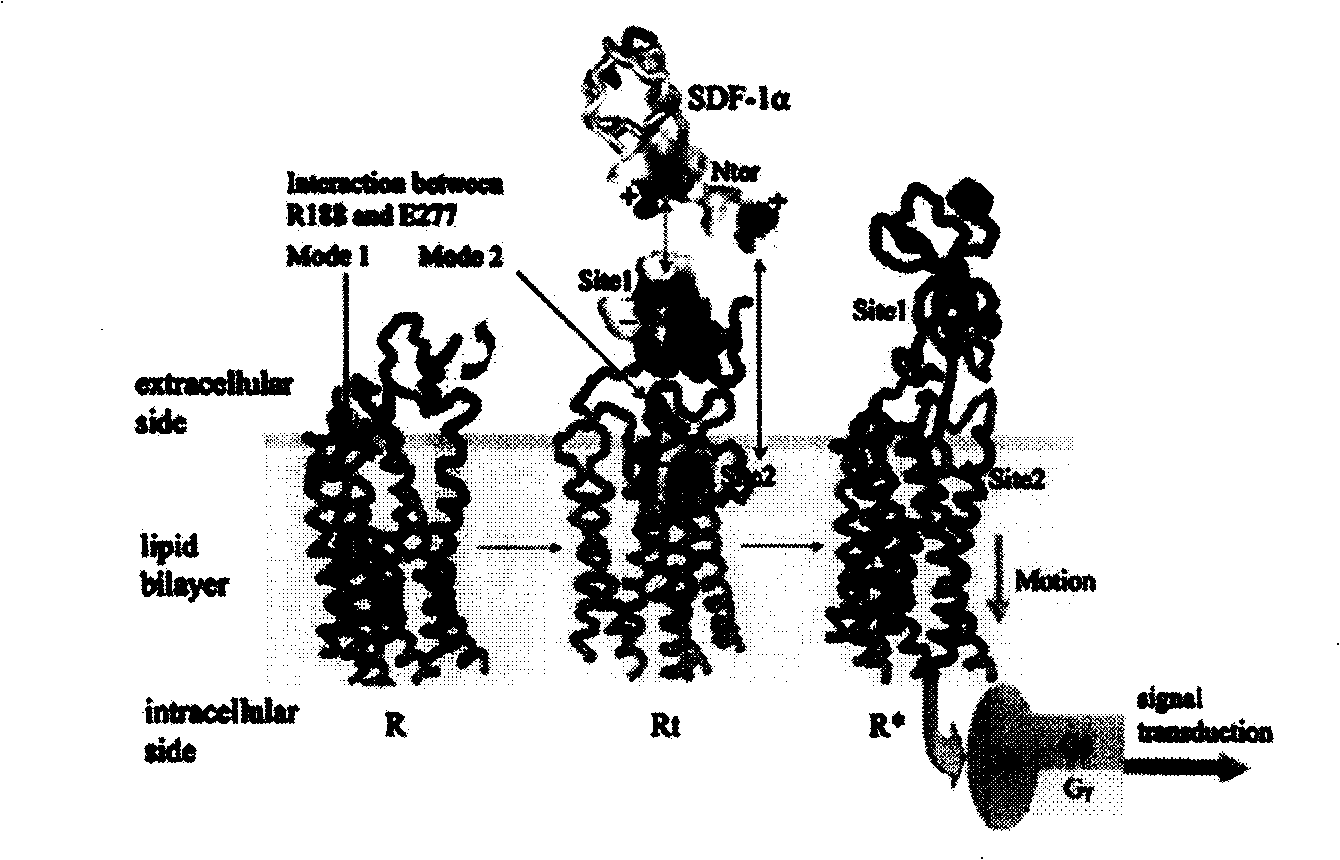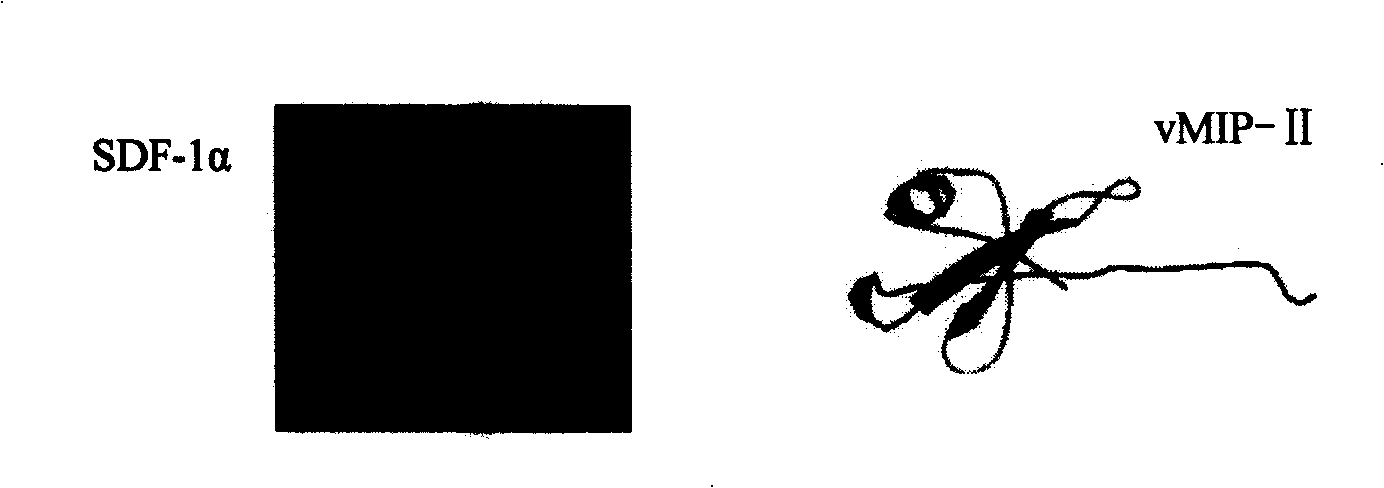Screening for CXCR4 receptor antagonism polypeptides for treating breast carcinoma and its uses
A breast cancer, antagonistic technology, applied in the field of anti-breast cancer metastasis drugs, can solve the problems of screening and application methods of CXCR4 receptor antagonistic polypeptides that have not been seen in breast cancer, achieve inhibition of axillary lymph nodes and lung metastasis, and reduce side effects , Improve the effect of radiotherapy concentration
- Summary
- Abstract
- Description
- Claims
- Application Information
AI Technical Summary
Problems solved by technology
Method used
Image
Examples
Embodiment 1
[0051] Example 1, multiple sequence comparison analysis of vMIP-II and CXCR4 receptor binding factor:
[0052] First select the human-derived chemokine sequence that specifically binds to the CXCR4 receptor for structure-based multiple sequence alignment analysis, and the residues that exist in all chemokine sequences may be the residues related to the receptor binding ( That is, the establishment of the standard binding residue model). Then the sequence of vMIP-II was introduced into the standard binding residue model for multiple sequence comparison analysis to obtain the residues related to the binding of vMIP-II to the receptor, that is, the residues highly related to the binding of vMIP-II to the receptor. We compared the protein sequences of several chemokines obtained from NCBI (including IL-8, SDF-1α, MIP-1β, RANTES). From the results, it can be seen that the C-terminus of chemokines has three antiparallel α-helices surrounded by β-sheets, with a large amount of charg...
Embodiment 2
[0054] Example 2, preparation of NT21MP.
[0055] The polypeptide described in the present invention obtains the binding site between vMIP-II and CXCR4 receptor on the basis of bioinformatics analysis, and then obtains it through a chemical synthesis method.
Embodiment 3
[0056] Example 3, NT21MP down-regulates the CXCR4 receptor expressed on the surface of breast cancer cells.
[0057] After SK-BR3 and MCF-7 breast cancer cell lines were treated with different concentrations of NT21MP, immunohistochemistry, RT-PCR and Western blot were used to detect the effect of NT21MP on the expression of CXCR4 receptor protein on the cell surface. The experimental results showed that, compared with the negative control group, NT21MP could significantly reduce the expression of CXCR4 in cells.
PUM
 Login to View More
Login to View More Abstract
Description
Claims
Application Information
 Login to View More
Login to View More - R&D
- Intellectual Property
- Life Sciences
- Materials
- Tech Scout
- Unparalleled Data Quality
- Higher Quality Content
- 60% Fewer Hallucinations
Browse by: Latest US Patents, China's latest patents, Technical Efficacy Thesaurus, Application Domain, Technology Topic, Popular Technical Reports.
© 2025 PatSnap. All rights reserved.Legal|Privacy policy|Modern Slavery Act Transparency Statement|Sitemap|About US| Contact US: help@patsnap.com



